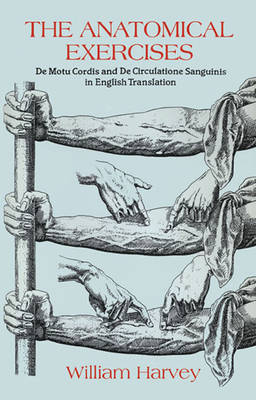
- Afhalen na 1 uur in een winkel met voorraad
- Gratis thuislevering in België vanaf € 30
- Ruim aanbod met 7 miljoen producten
- Afhalen na 1 uur in een winkel met voorraad
- Gratis thuislevering in België vanaf € 30
- Ruim aanbod met 7 miljoen producten
Zoeken
The Anatomical Exercises
de Motu Cordis and de Circulatione Sanguinis in English Translation
William Harvey
€ 16,95
+ 33 punten
Omschrijving
The English physician William Harvey (1578-1657) was the first to discover how blood actually circulates in living creatures. This book is a fascinating account of how Harvey's theory of the circulation of the blood came into being. A classic of science, it has long been considered a model of accurate observation, careful experimentation and notation, and logical deduction.
Through his intense studies in anatomy and the experience he gained through a long series of dissections of animals, Harvey amassed a much broader knowledge of the comparative anatomy of the heart and blood vessels than his contemporaries or any others before him. It was a breakthrough that stunned his colleagues, most of whom still clung to the theories of Aristotle, Galen, and others -- theories Harvey proved both inadequate and inaccurate.The original text of Harvey's landmark study consisted of two works written and published in Latin. This Dover edition, reprinted from a rare copy of a limited edition of 1,450 copies, reproduces the English translation made during Harvey's lifetime. In the Editor's Postscript, Geoffrey Keynes praised this lively translation as one filled with "the vigour of the seventeenth century . . . with a sufficient sprinkling of expressive, if now unusual, terms to produce the feeling that Harvey himself is speaking."
Through his intense studies in anatomy and the experience he gained through a long series of dissections of animals, Harvey amassed a much broader knowledge of the comparative anatomy of the heart and blood vessels than his contemporaries or any others before him. It was a breakthrough that stunned his colleagues, most of whom still clung to the theories of Aristotle, Galen, and others -- theories Harvey proved both inadequate and inaccurate.The original text of Harvey's landmark study consisted of two works written and published in Latin. This Dover edition, reprinted from a rare copy of a limited edition of 1,450 copies, reproduces the English translation made during Harvey's lifetime. In the Editor's Postscript, Geoffrey Keynes praised this lively translation as one filled with "the vigour of the seventeenth century . . . with a sufficient sprinkling of expressive, if now unusual, terms to produce the feeling that Harvey himself is speaking."
Specificaties
Betrokkenen
- Auteur(s):
- Uitgeverij:
Inhoud
- Aantal bladzijden:
- 240
- Taal:
- Engels
- Reeks:
Eigenschappen
- Productcode (EAN):
- 9780486688275
- Verschijningsdatum:
- 22/05/2013
- Uitvoering:
- Paperback
- Formaat:
- Trade paperback (VS)
- Afmetingen:
- 137 mm x 215 mm
- Gewicht:
- 235 g

Alleen bij Standaard Boekhandel
+ 33 punten op je klantenkaart van Standaard Boekhandel
Beoordelingen
We publiceren alleen reviews die voldoen aan de voorwaarden voor reviews. Bekijk onze voorwaarden voor reviews.








